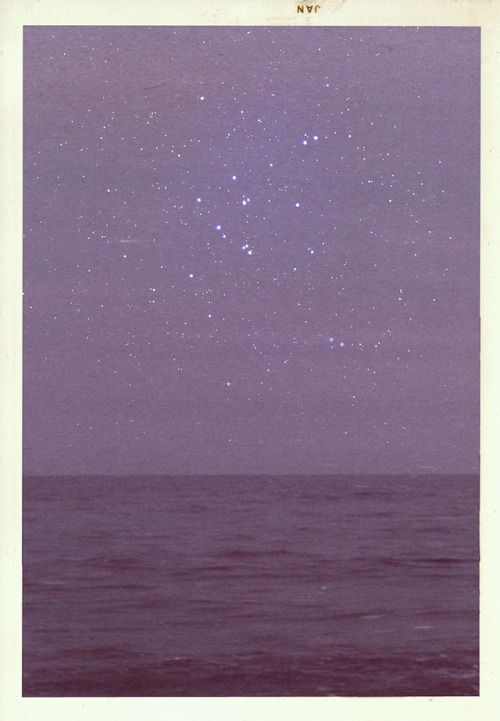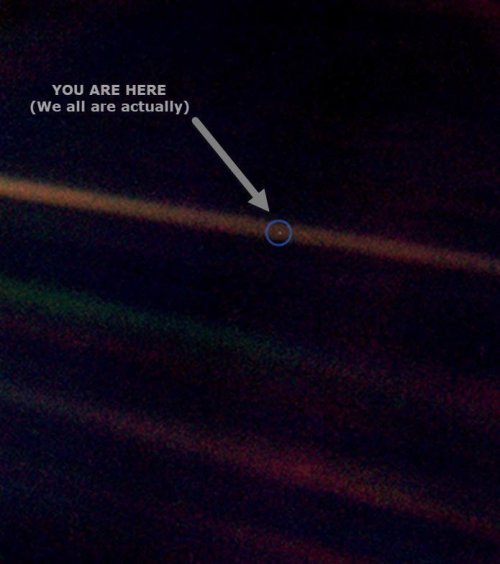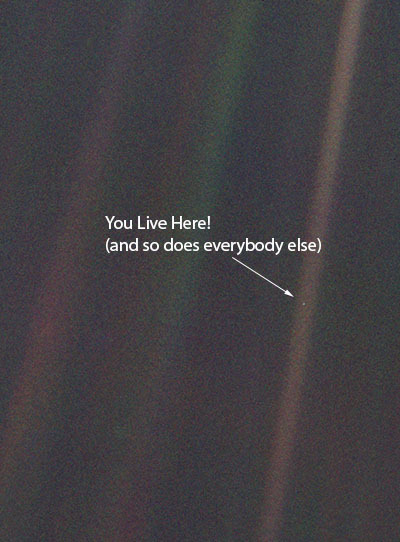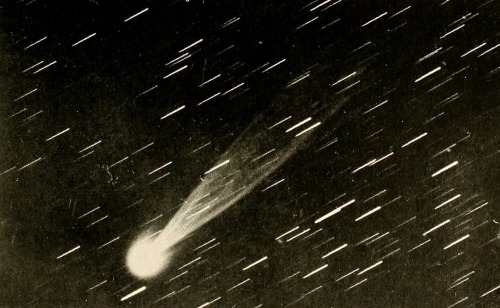Francesco Levy, The Constellations Of Summer

Francesco Levy, The Constellations of Summer
More Posts from Ad-astra-affecte-spe and Others


Saturn has a mysterious hexagon at its north pole that has refused to give up its secrets, probably because neither Voyager 1 nor Cassini was able to plunge that deep and survive. Harvard scientists Rakesh Yadav and Jeremy Bloxham might have finally started to figure out what causes this peculiar feature. They believe that vortexes occur at the planet’s north pole because of atmospheric flows deep within the gas giant, and that these vortexes pinch an intense horizontal jet near the equator—which is what warps the storm into a hexagon. It still looks unnatural though.....!!!






cancel your plans we’re thinking about the pale blue dot voyager pic tonight

A stellar exodus was caught in action! Astronomers used the Hubble Space Telescope to watch the white dwarf exodus in the globular star cluster 47 Tucanae, a dense swarm of hundreds of thousands of stars in our Milky Way galaxy. Hubble took snapshots of fledgling white dwarf stars beginning their slow-paced, 40-million-year migration from the crowded center of an ancient star cluster to the less populated suburbs. By observing ultraviolet light, astronomers examined 3,000 white dwarfs, tracing two populations with diverse ages and orbits. One grouping was 6 million years old and had just begun their journey. Another was around 100 million years old and had already arrived at its new homestead far from the center, roughly 1.5 light-years, or nearly 9 trillion miles (14 trillion kilometers), away. The cluster resides 14,500 light-years away in the southern constellation Tucana. Credit: NASA, ESA, and H. Richer and J. Heyl (University of British Columbia, Vancouver, Canada). ALT TEXT: Thousands of stars, seen as tiny dots, are shown on a black background. The stars vary in size and color, including orange, yellow, and white.




A beginner’s star-book, an easy guide to the stars and to the astronomical uses of the opera-glass, the field-glass and the telescope, 1912

Gamma Cas & Ghost Nebula © Antoine Grelin



Mars painting by Herb Herrick for an article about terraforming in World Book Science Annual 1975. Consultant: Carl Sagan. The first painting (top) is followed by two clear plastic overlays of the skies and rain and finally plant life.
-
 marooned-in-reality liked this · 1 month ago
marooned-in-reality liked this · 1 month ago -
 radpachinko liked this · 1 month ago
radpachinko liked this · 1 month ago -
 redcoatchemist liked this · 1 month ago
redcoatchemist liked this · 1 month ago -
 kura3-14 liked this · 1 month ago
kura3-14 liked this · 1 month ago -
 scurrile-histrion liked this · 1 month ago
scurrile-histrion liked this · 1 month ago -
 rokokokokolores liked this · 1 month ago
rokokokokolores liked this · 1 month ago -
 ley-med liked this · 1 month ago
ley-med liked this · 1 month ago -
 folatefangirl reblogged this · 1 month ago
folatefangirl reblogged this · 1 month ago -
 ishouldbeapunktimelord reblogged this · 1 month ago
ishouldbeapunktimelord reblogged this · 1 month ago -
 happyvampyxoxo liked this · 1 month ago
happyvampyxoxo liked this · 1 month ago -
 ariamis97 liked this · 1 month ago
ariamis97 liked this · 1 month ago -
 thenewtorment reblogged this · 1 month ago
thenewtorment reblogged this · 1 month ago -
 medicalmaranarapatient reblogged this · 1 month ago
medicalmaranarapatient reblogged this · 1 month ago -
 medicalmaranarapatient liked this · 1 month ago
medicalmaranarapatient liked this · 1 month ago -
 deboue-et-dor reblogged this · 1 month ago
deboue-et-dor reblogged this · 1 month ago -
 deboue-et-dor liked this · 1 month ago
deboue-et-dor liked this · 1 month ago -
 lyssanicole222 reblogged this · 1 month ago
lyssanicole222 reblogged this · 1 month ago -
 yourlocalwitchh reblogged this · 1 month ago
yourlocalwitchh reblogged this · 1 month ago -
 paranoidparacosm liked this · 1 month ago
paranoidparacosm liked this · 1 month ago -
 nikskin7 liked this · 1 month ago
nikskin7 liked this · 1 month ago -
 vinocean22 reblogged this · 1 month ago
vinocean22 reblogged this · 1 month ago -
 claudiaciardiautrice reblogged this · 1 month ago
claudiaciardiautrice reblogged this · 1 month ago -
 claudiaciardiautrice liked this · 1 month ago
claudiaciardiautrice liked this · 1 month ago -
 granstromjulius reblogged this · 1 month ago
granstromjulius reblogged this · 1 month ago -
 granstromjulius liked this · 1 month ago
granstromjulius liked this · 1 month ago -
 sacredl0tus9 reblogged this · 1 month ago
sacredl0tus9 reblogged this · 1 month ago -
 rosevintagedreams liked this · 1 month ago
rosevintagedreams liked this · 1 month ago -
 ladylavenderstone reblogged this · 1 month ago
ladylavenderstone reblogged this · 1 month ago -
 eclecticwitchjinx reblogged this · 1 month ago
eclecticwitchjinx reblogged this · 1 month ago -
 broadwaydemigod liked this · 1 month ago
broadwaydemigod liked this · 1 month ago -
 aa-lamp-shade reblogged this · 1 month ago
aa-lamp-shade reblogged this · 1 month ago -
 aa-lamp-shade liked this · 1 month ago
aa-lamp-shade liked this · 1 month ago -
 redddwinne liked this · 1 month ago
redddwinne liked this · 1 month ago -
 nala14nailea liked this · 1 month ago
nala14nailea liked this · 1 month ago -
 catsandwildlife liked this · 1 month ago
catsandwildlife liked this · 1 month ago -
 xfor-what-its-worthx reblogged this · 1 month ago
xfor-what-its-worthx reblogged this · 1 month ago -
 who-fears-a-muse reblogged this · 1 month ago
who-fears-a-muse reblogged this · 1 month ago -
 lunolik liked this · 1 month ago
lunolik liked this · 1 month ago -
 ellindomundodeangelica reblogged this · 1 month ago
ellindomundodeangelica reblogged this · 1 month ago -
 jameschildress reblogged this · 1 month ago
jameschildress reblogged this · 1 month ago -
 jameschildress liked this · 1 month ago
jameschildress liked this · 1 month ago -
 venusiansex liked this · 1 month ago
venusiansex liked this · 1 month ago -
 kuuuriboh reblogged this · 1 month ago
kuuuriboh reblogged this · 1 month ago -
 chefhanie liked this · 1 month ago
chefhanie liked this · 1 month ago -
 kissingfrogs- reblogged this · 1 month ago
kissingfrogs- reblogged this · 1 month ago -
 1rightafterthe reblogged this · 1 month ago
1rightafterthe reblogged this · 1 month ago -
 xfor-what-its-worthx liked this · 1 month ago
xfor-what-its-worthx liked this · 1 month ago -
 yikesdudex reblogged this · 1 month ago
yikesdudex reblogged this · 1 month ago -
 offtheshelftru-ism liked this · 1 month ago
offtheshelftru-ism liked this · 1 month ago -
 m-u-r-a-m-a-s-a liked this · 1 month ago
m-u-r-a-m-a-s-a liked this · 1 month ago

★•Astronomy, Physics, and Aerospace•★ Original and Reblogged Content curated by a NASA Solar System Ambassador
204 posts







